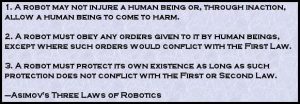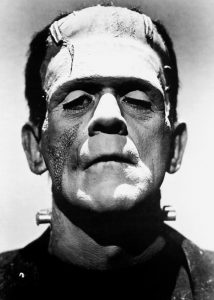
It was two hundred years ago this month (Jan2018) that the novel Frankenstein was first published and has in that time become one of the best known stories ever written. So famous is the tale of the man who made a monster that I’m going to skip describing the plot in order to discuss less well known aspects of Frankenstein.
Most people know that it was a woman, Mary Shelly, who wrote this tale of horror. However few people know that Mary was only nineteen years old at the time she wrote Frankenstein, nor that the novel was written in Switzerland, the home country of it’s protagonist Victor Frankenstein (Nope, Doctor Frankenstein is not a baron and he’s not even German).
According to Mary’s original introduction, she and her husband the poet Percy Shelly were spending a rainy, dreary evening with their friend the poet Lord Byron when Bryon suggested that they should each of them write ‘a ghost story’. I’ve heard that Byron also completed his tale but I’ve never read or even seen it, only Mary’s story went on to become a cultural icon.
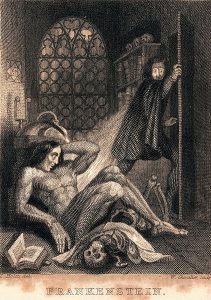
Literary scholars have argued endlessly about the possible inspirations for Frankenstein but I think there were three, two mythical and one scientific. The first myth is the Greek story of how the Titan Prometheus created the first men from clay (that’s right the Greeks didn’t believe that God made man, it was his uncle who made us!). The connection with Frankenstein’s bringing to life a creature of his own creation is obvious.
Not quite as obvious is the connection to the legend of Faust but I think the influence is more important. Now I agree that unlike Frankenstein, Faust explicitly knew that he was making a deal with the devil and that although Faust gained many powers by that deal he never used them to bring anything to life. However it is clear that Frankenstein, as portrayed by Mary Shelly, gives up his humanity in order to acquire knowledge and power. It is this idea of a scientist who creates the instrument of his own destruction that makes Frankenstein the Faust metaphor for the age of science.
The final inspiration for Frankenstein was the rapid advance of science in the late 18th and early 19th centuries. In particular the discovery by the Italian physicist Luigi Galvani in 1791 that the leg of a dead frog will twitch when poked by two different metals which led to the idea of ‘animal electricity’, a connection between life and lightning that is used in both the novel and every Frankenstein movie ever made.
Mary Shelly’s novel quickly became a sensation and so it was no surprise that one of the very first movies ever made was a version of Frankenstein. The first film version of Frankenstein was made by no less than Thomas Edison the inventor of the motion picture.
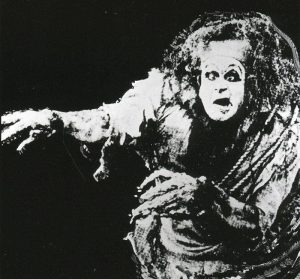
It was the film version by Universal studios starring Boris Karloff as the monster that remains the Frankenstein in popular culture. Indeed, Karloff’s performance was so iconic that he succeeded in shifting the emphasis from the maker to the monster. Since Karloff there have in fact been numerous movies made that have the monster as a character but no Doctor Frankenstein. For many people today Frankenstein is the monster, not the man who made him.
Mary Shelly’s novel has also had an enormous influence on other writers in the years since it was first published. In his play ‘Rossum’s Universal Robots’ (R.U.R.) the Czech author Karel Capek described how a scientist manufactures an army of artificial workers who turn on and destroy humanity. Robot is the Czech word for worker by the way. The link to Frankenstein is obvious. Many of the B-grade movies I saw when I was young had a similar plot with a scientist’s invention becoming a threat to the world.
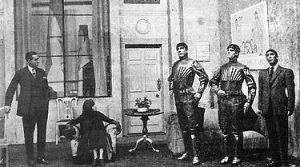
There were also authors who saw thing differently however. One of these was Isaac Asimov who realized that if we learned how to build a Frankenstein’s monster we could also learn how to make it safe! Asimov wrote many stories and novels with robots playing an important role, and every one of Asimov’s robots were designed and manufactured to obey the three laws of robotics that made them both useful and safe. As much as I love Frankenstein I agree with Asimov, if humanity’s inventions threaten us then it is our fault, not our creation’s. I will leave you today with the three laws as composed by Isaac Asimov.
